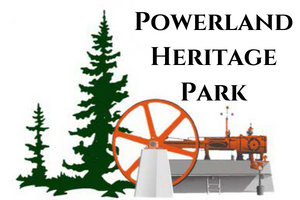Excerpt from The Story of a Saskatchewan Farmboy by Percy Dezotell
The Dezotell Building currently houses the museum entrance and administrative offices for Antique Powerland. It is dedicated to the memory of Percy Dezotell and it was built to house his miniature farm display. Percy grew up in the 1920’s on a wheat farm on the plains near Saskatchewan, Canada.
This miniature farm display was handmade by Percy and Margaret Dezotell, of Salem, Oregon to tell the story of the way wheat farming was done in the 1920’s. The display is built on the scale of 3/4 inch per foot. It takes a 256 square foot table on which to display it.
Percy Dezotell was born and raised on a farm in Saskatchewan, Canada, a province where the main crop is wheat. He grew up farming with his father, driving horse-drawn outfits. At the age of 14, he was doing a man's job, such as seeding, plowing and pitching bundles. By the time he was 19, Percy could run the entire threshing outfit, having performed all operations.
First, they had horse outfits, then small gas tractors. The display shows spring seeding, summer fallow and harvest operations, all at one time, to give the overall picture of a year's farming activities. Also, he made the different types of machinery used to produce a wheat crop.
The horses were whittled out of 2 x 6 balsa wood, then painted and harnessed. The bundles and shocks were made of binder twine. The machinery was made of metal and wood and they have been placed where each was supposed to be. Most of the machinery is workable, like the real machinery was.
In 1920, Percy’s father purchased an International Harvester 2 cylinder Titan 10-20 tractor. That was the first tractor Percy learned to drive in the field. In 1926, his father traded the Titan for a 16-30 Eagle two cylinder tractor; and in 1928, they traded the Eagle for an 18-36 two cylinder Hart-Parr tractor. They had an Aultman-Taylor separator pulled by the Titan, then a Waterloo separator new in 1921. In 1928, they purchased a Bell City separator.
In 1928, Percy’s father bought a 10 ft. McCormick-Deering power binder. They pulled it with the Hart-Parr tractor. This was a one man job, and Percy cut many an acre of wheat with this binder.
After the Depression hit in 1929, there was the drought, then came an assault by grasshoppers and gophers. This wiped out three years worth of crops. Percy’s father managed to keep his land, but lost some of the machinery. Percy left with his family and moved to California in 1933, even though wages were very low there.
Percy couldn't get ahead enough to get back to Saskatchewan until after World War II. In 1946, he made a trip back, but it had all changed. Horse farming was a thing of the past, and the little farms had been bought up and consolidated into much larger ones, with tractors doing it all. A lot of the familiar farm homes had either been torn down or moved into town, and the barns made into machinery sheds and grain bins. Even the school house had been moved away.
Seeing all the changes after Percy left in 1933, motivated him to build his memories in miniature, as it had been in the period from 1920 to 1930. This display can be seen in the Percy Dezotell Building at Powerland Heritage Park.

